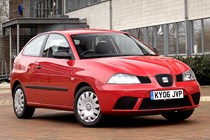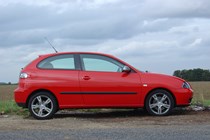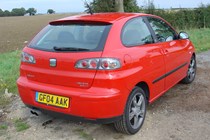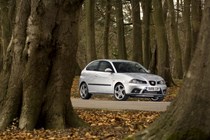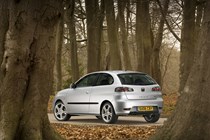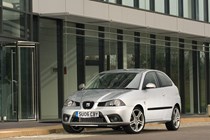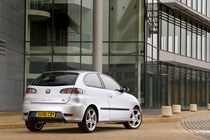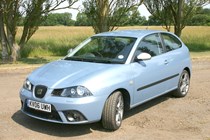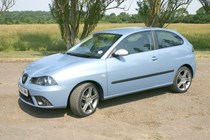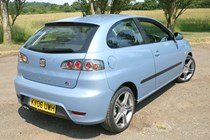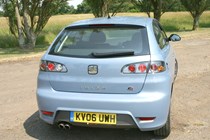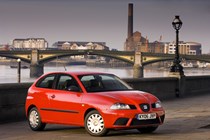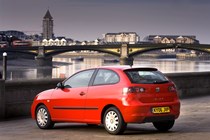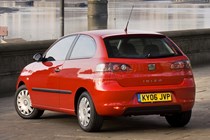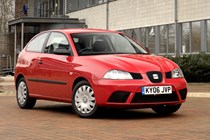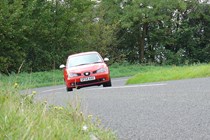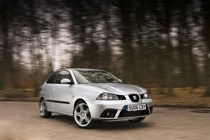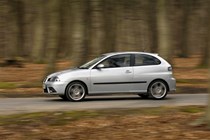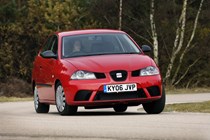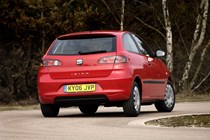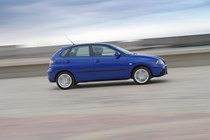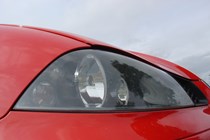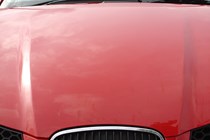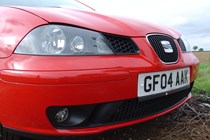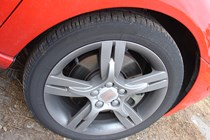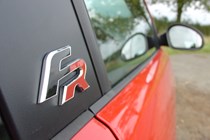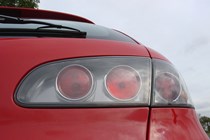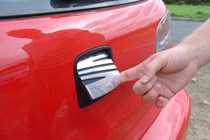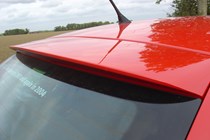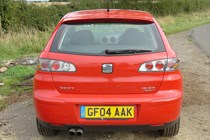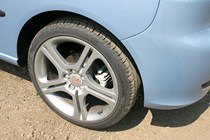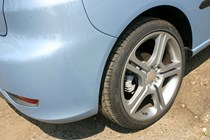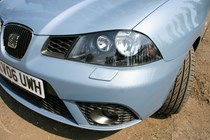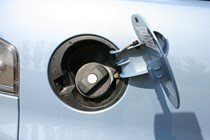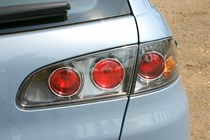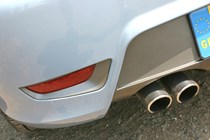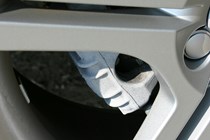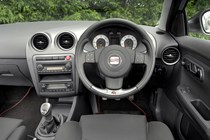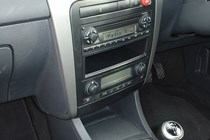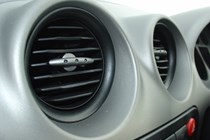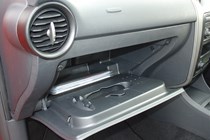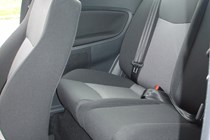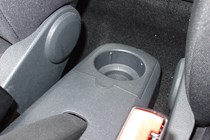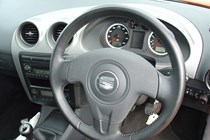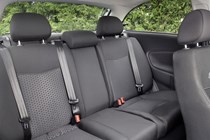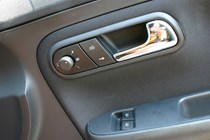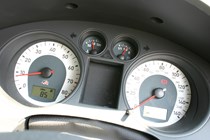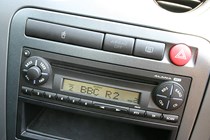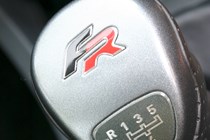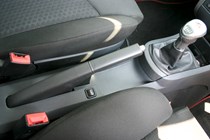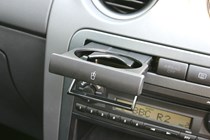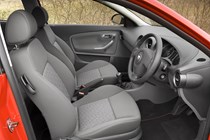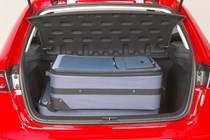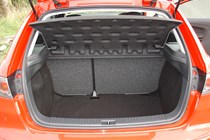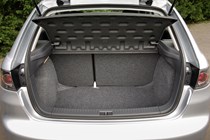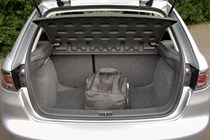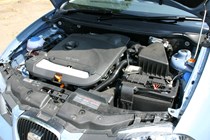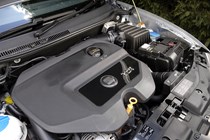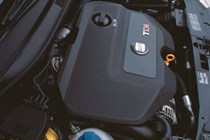
SEAT Ibiza Hatchback (2002-2009) engines, drive and performance
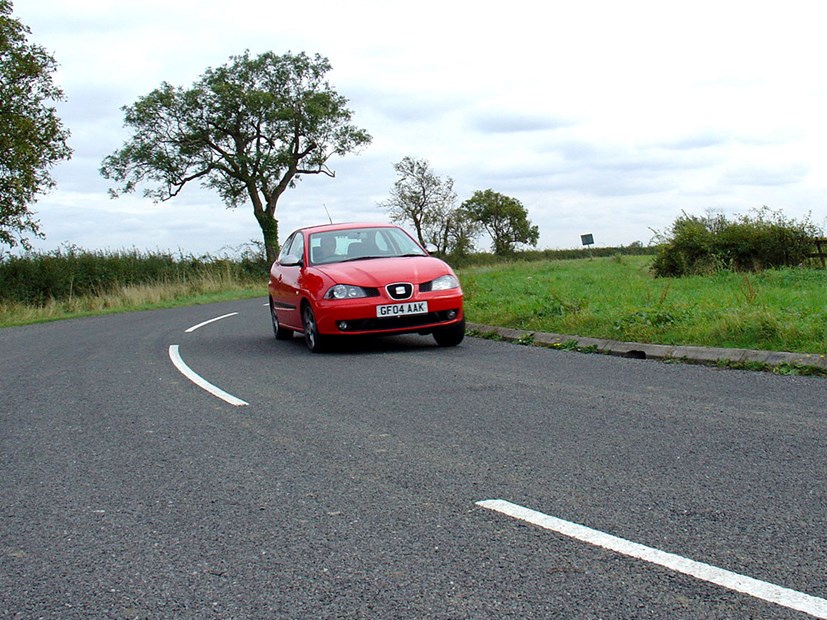
The punchy 1.2-litre is a three-cylinder engine with character – it sounds sporty and gives a good turn of speed around town as well as useful fuel economy. It can feel sluggish on dual carriageways though so for more performance go for the 1.4-litre unit which comes with either 75bhp or 100bhp – although the lower power unit lacks pulling power considering its size.
The short-lived 2.0-litre Sport doesn’t offer the performance that the name suggests but the diesels (1.4-litre and 1.9-litre TDI) feel quick (albeit not very refined) and have plenty of pulling power. The 1.9 TDI is also used in the Ecomotive model which, thanks to low resistance tyres and longer gearing, emits just 99g/km of CO2 and will average 74mpg.
There are a number of hot versions that offer serious performance for such a small car. The FR is available with either a 150bhp 1.8T unit or a 1.9-litre TDI with 130bhp. Both offer impressive power for the Ibiza’s small chassis and feel as quick as the sporty styling suggests. The diesel version has loads of low-down power and makes light work of overtaking – it’s the pick of the two.
Cupra versions are even quicker, though no more fun than the two FRs – the 1.8T Cupra has 180bhp and the 1.9 TDI Cupra gets 160bhp. The petrol version gets to 62mph in 7.1 seconds while the diesel does it in 7.4 seconds.
The standard models aren’t as fun as you might expect, but still offer an enjoyable drive compared to other cars in this class. There’s a good gearchange, although the steering can be a bit too light. Through corners, the Ibiza feels confident and there’s not an awful lot of bodyroll. It has a stiffer suspension set-up than the Volkswagen Polo and Skoda Fabia, which makes for a sportier drive, but this has an impact on the ride quality.
It can feel a little rough on average roads, while it’s crashy over less perfect tarmac.


